Water Camp: Thursday
Water Camp: Thursday
Welcome to Day 4 of Splish Splash Water Camp! Earlier in the week we observed some of the pollutants that can hurt our water and the wildlife within and surrounding. Today, we focused more on water health the ways we can help with water purification.
Animal Chores
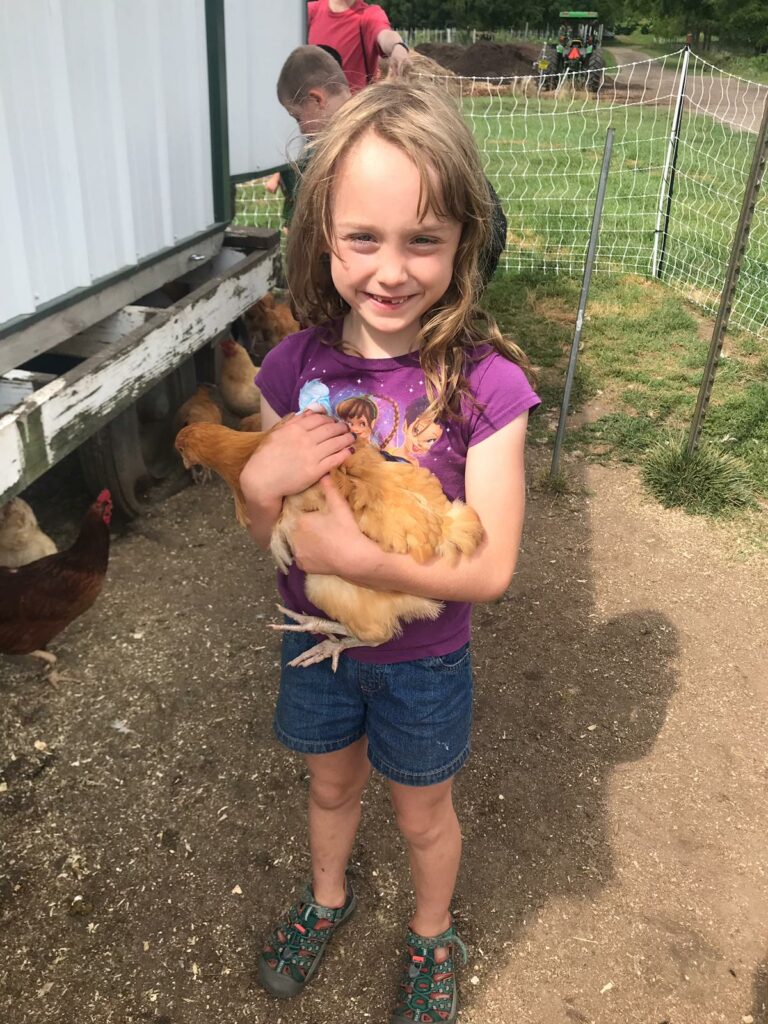
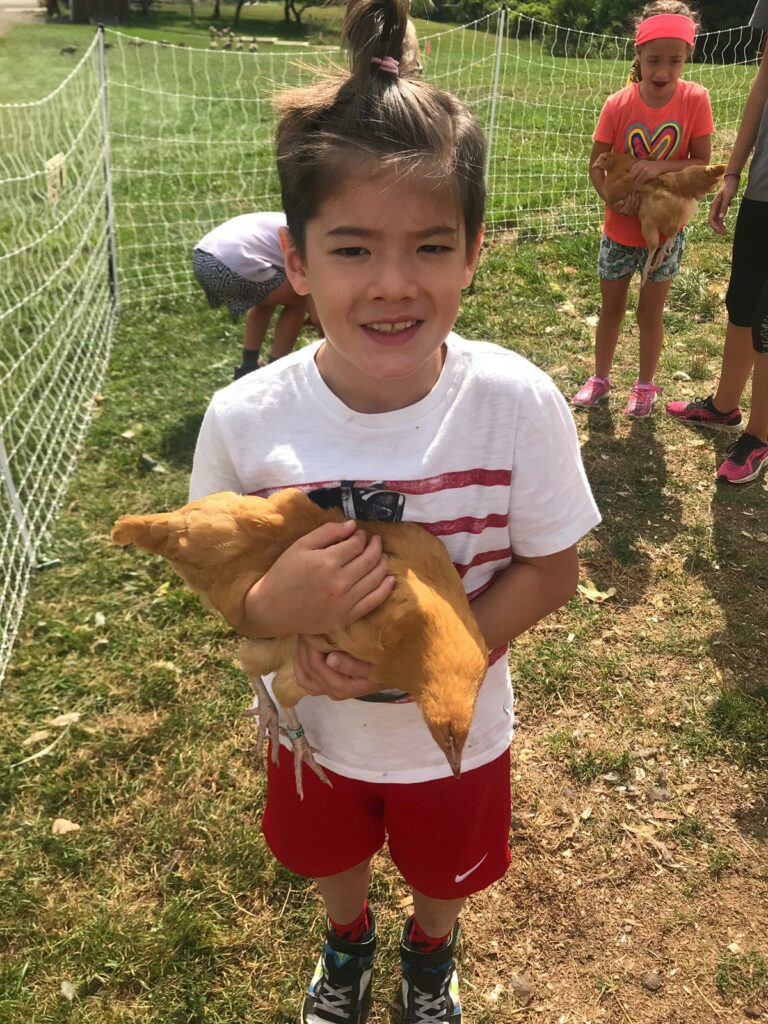
Garden Kitchen
Pineapple Salsa
- 1 cup diced pineapple
- 1 cup diced bell peppers (any combination of red, orange, yellow or green peppers)
- 1 cup diced Roma tomatoes
- 1/3 cup chopped cilantro
- 1/4 cup minced red onion
- 4 tbsp lime juice (about 2 limes or use bottled lime juice)
- 1/4 tsp black pepper
- 1/8 tsp salt
Directions: Mix all ingredients and serve immediately or chill until ready to serve.
Black Bean Soup
- 2 tablespoons olive oil
- ½ medium yellow onion, diced
- 2 cloves garlic, minced
- 1 teaspoon chili powder
- 1 cup tomato, with juice
- 15 oz canned black bean, 2 cans, drained
- 3 cups water
- 1 teaspoon kosher salt
- ½ teaspoon ground black pepper
Directions: Heat the olive oil in a large pot over medium heat. Add the onion, garlic, and chili powder and cook until fragrant, about 3 minutes. Add the tomatoes, black beans, water, salt, and pepper and let simmer for about 20 minutes. Use an immersion blender to puree the soup until slightly chunky, or transfer half of the soup to a blender and puree, then transfer back to the pot. Ladle half of the soup into a bowl and garnish with red onion, cilantro, and a lime wedge. Store the remaining soup in the fridge.
With casting practice completed earlier this week, we were ready for fishing! Although our pond has plenty of algae, we were still able to make some great catches.
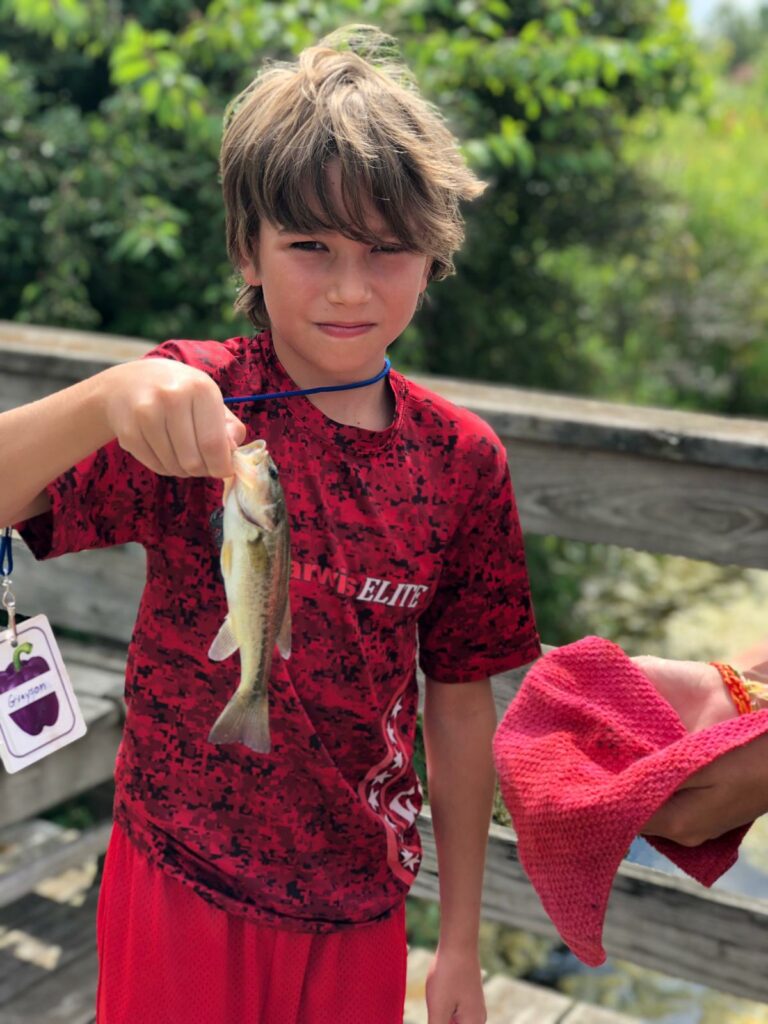
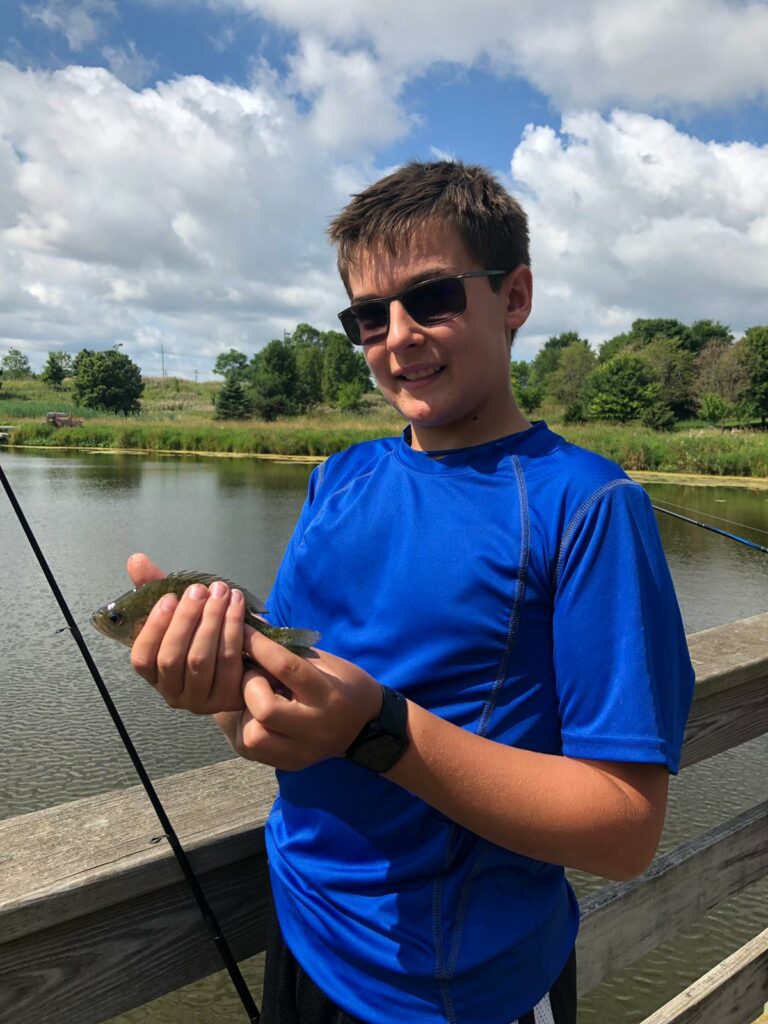
In an activity called Shower Curtain Watershed, campers attempted to answer the questions, "Where does rain water go?" and "How do humans affect the health of our watersheds?". To model a watershed, students sat in a circle with a shower curtain over their legs. Their legs create mounds under the curtain that act like uneven land formations such as hills and valleys. Prior to adding water, campers predicted how water would move around their legs (would it flow? would it stop? would it runoff the curtain?). Rain was simulated by spraying water from above. As it ran down the 'mountains' campers were able to see where ponds, lakes, or rivers might form. Sponges were added to represent soil that absorbs some of the water and plastic animals showed where animals live and use water.
Campers played a game called The Long Haul to develop an awareness of various volumes of water and how much is used. As they played, they started to understand how easy access to water encourages large usage and how having to haul their water a long way made them appreciate our daily water consumption. In this relay style game, campers collected water in a sponge and had to wring it out in a far away bucket. Each player repeated these steps until they had emptied their starting bucket.
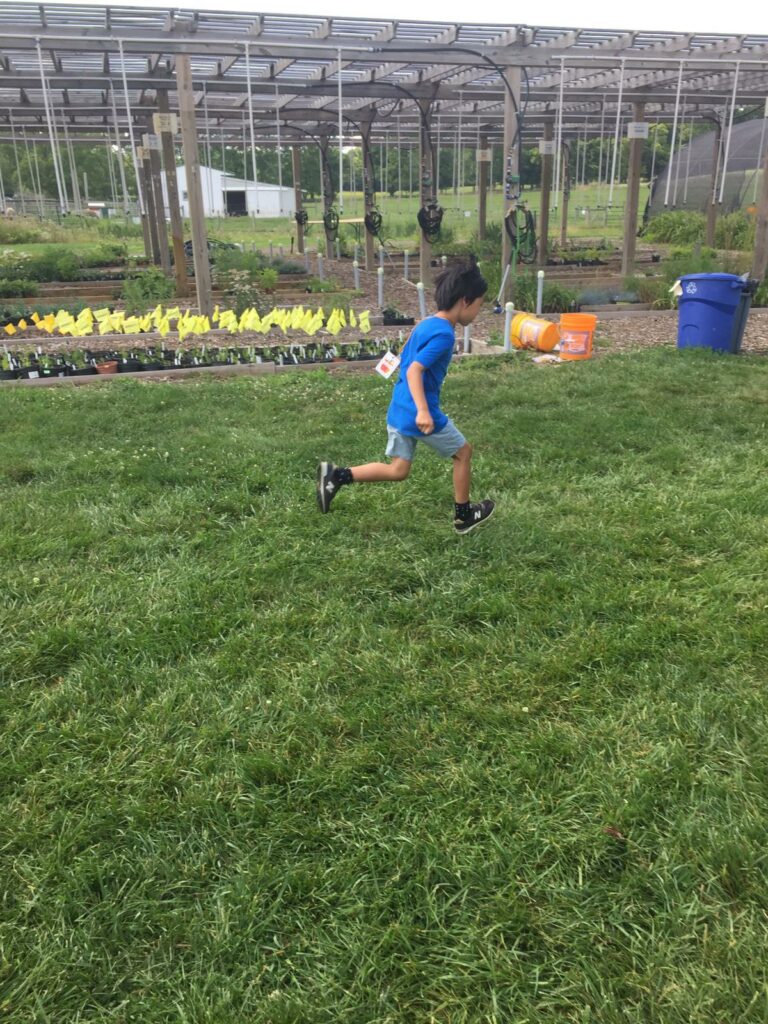
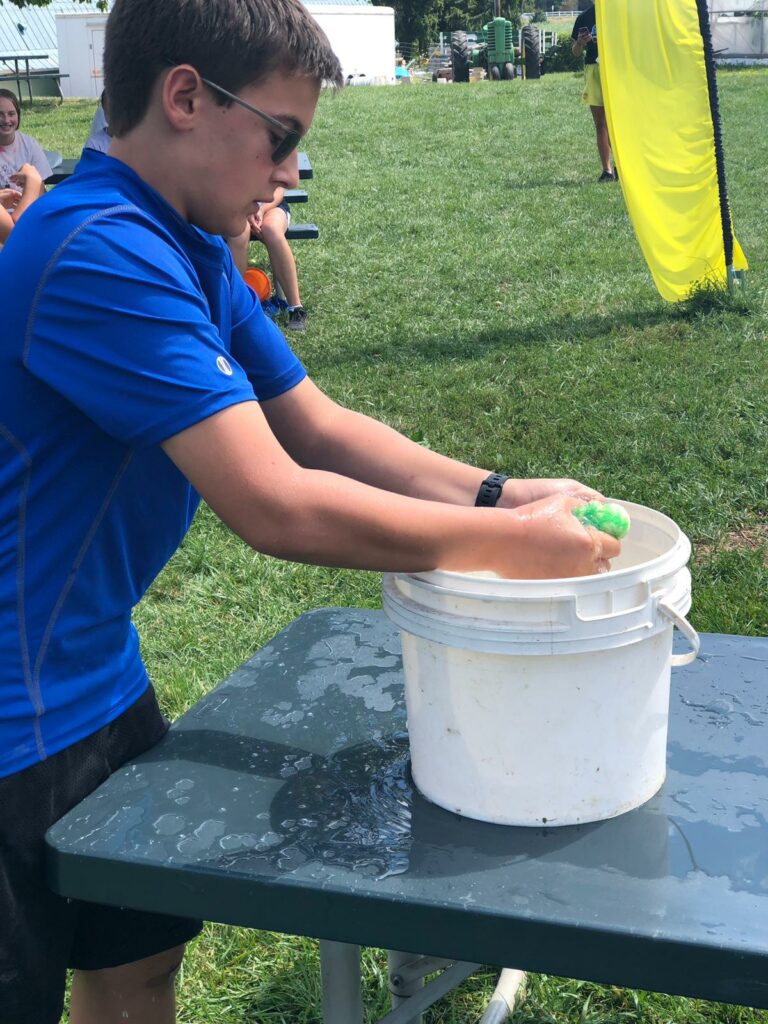
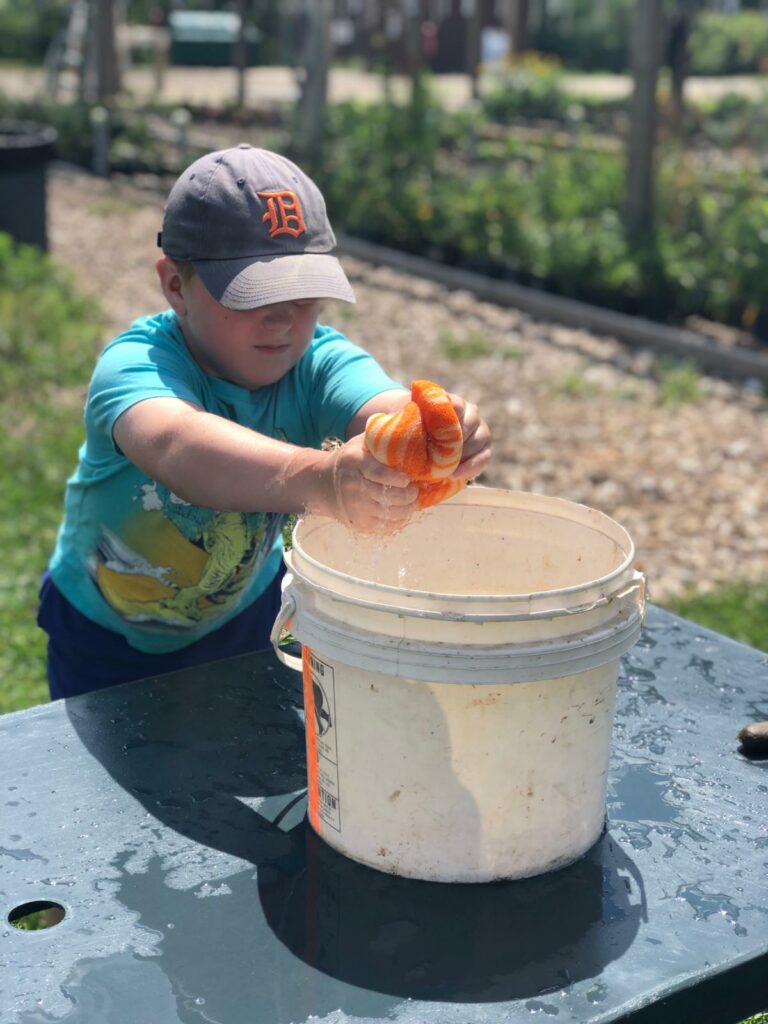
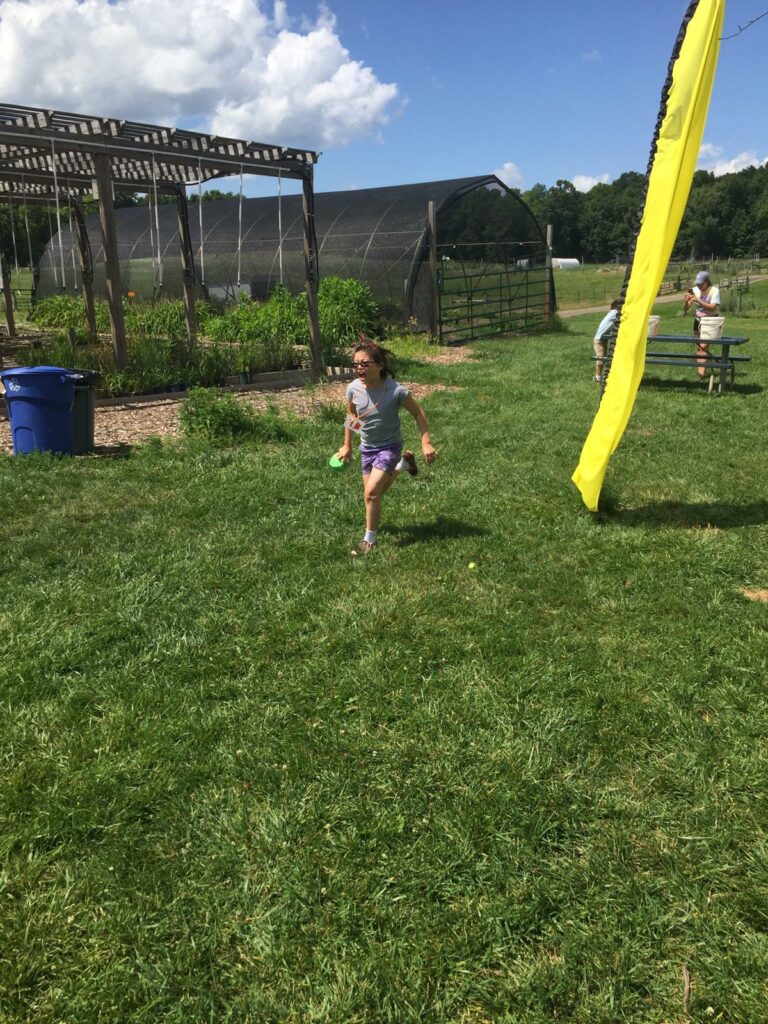
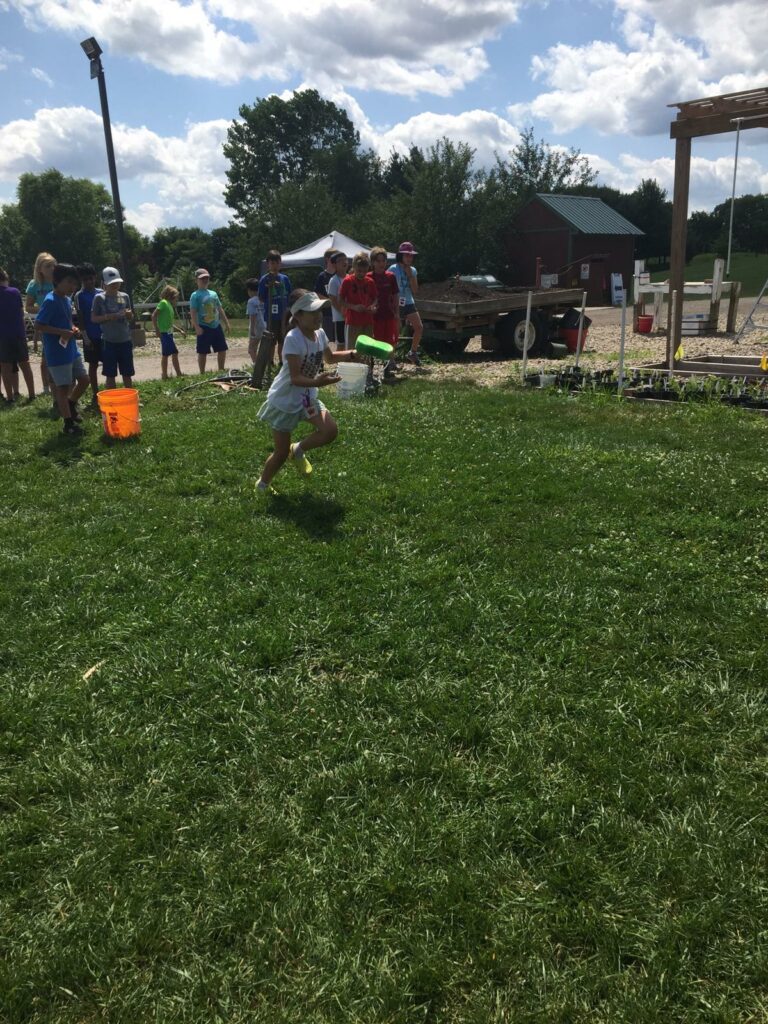
Campers took on the Purify H2O Challenge! In this challenge, campers started by identifying sources of pollution on the farm and in their own lives. They brainstormed ways to counteract these forms of pollution. As they were thinking, they realized that not all pollution can be seen or effectively removed from water, eventually leading them to the conclusion that purification is important but so is pollution prevention. In this activity, campers were given a variety of materials to 'pollute' a sample of water. It was then their job to try and remove these pollutants. Campers found it easy to remove larger particles, like rocks, and difficult to remove substances that had dissolved, such as food coloring.
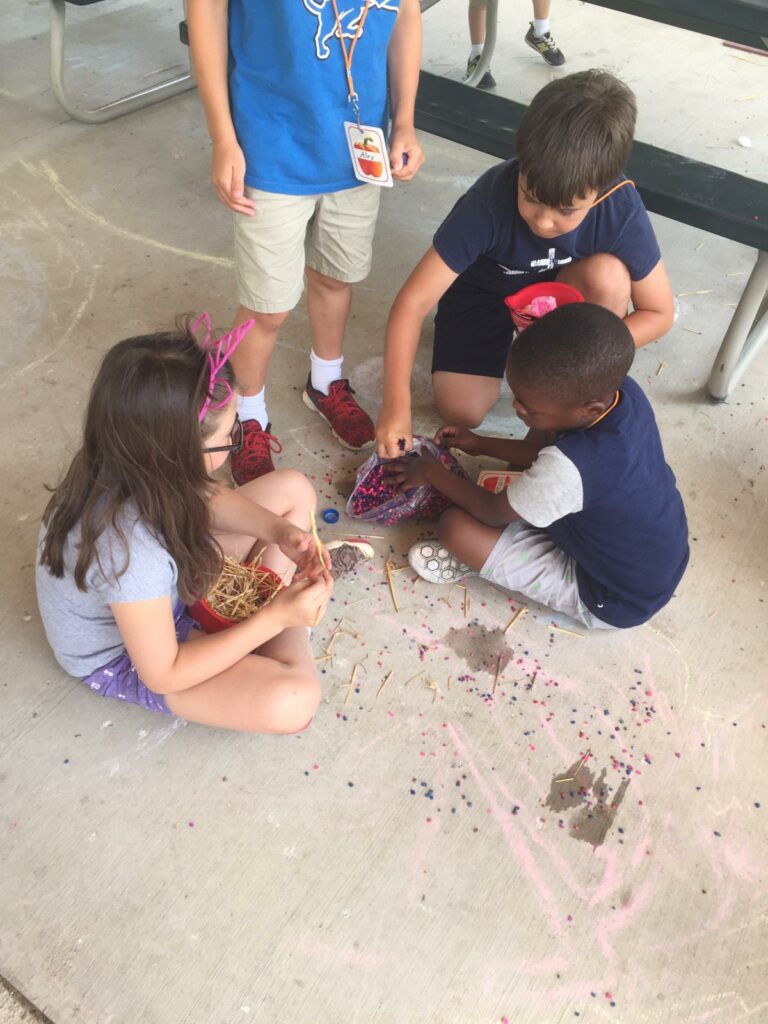
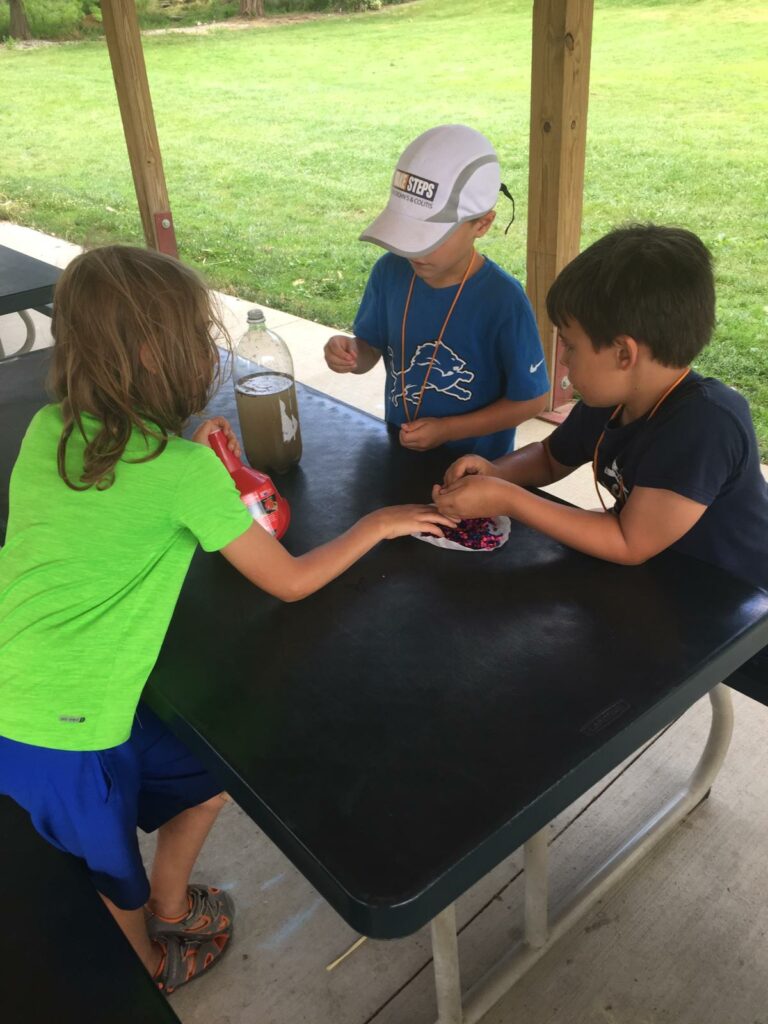
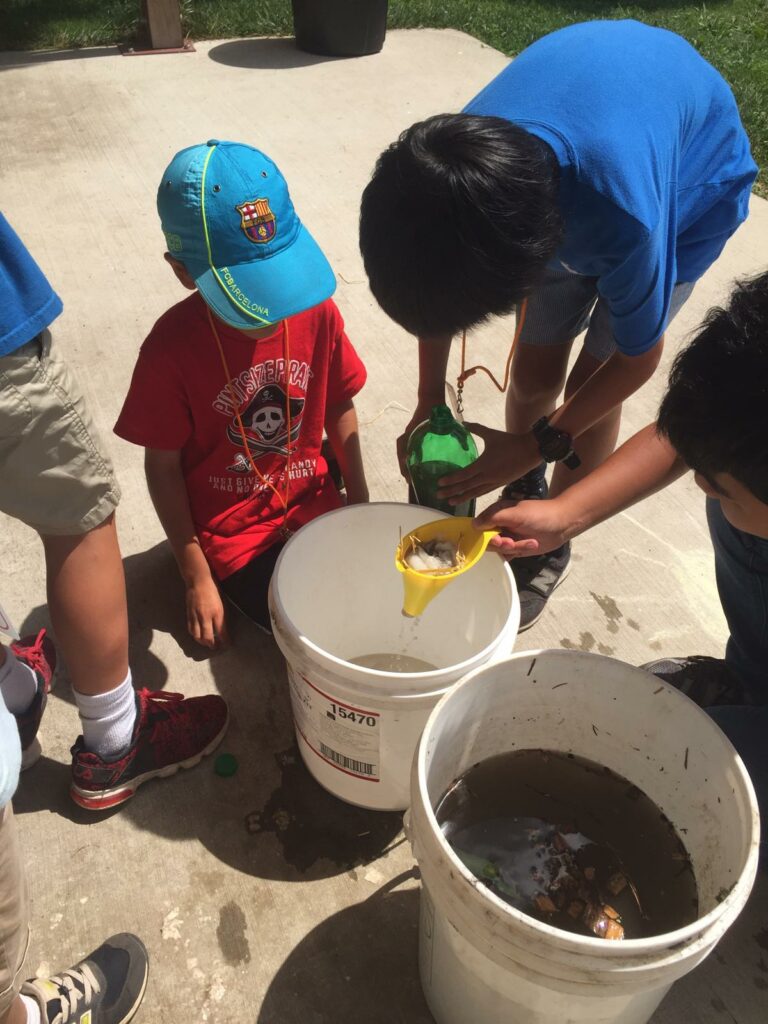
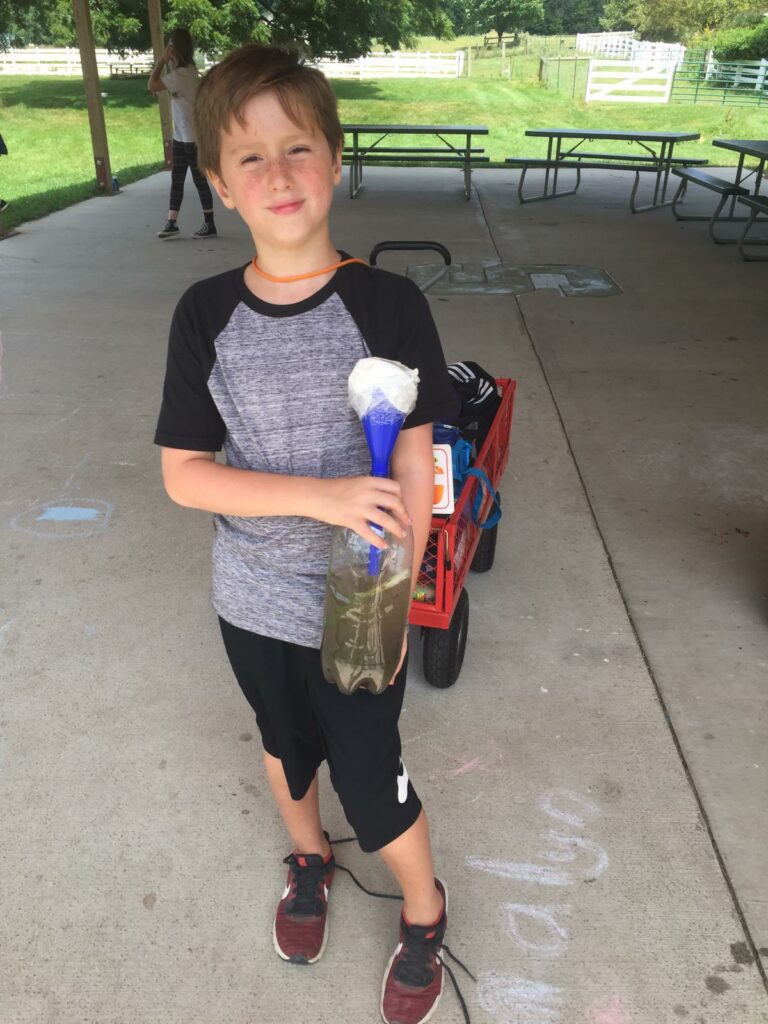
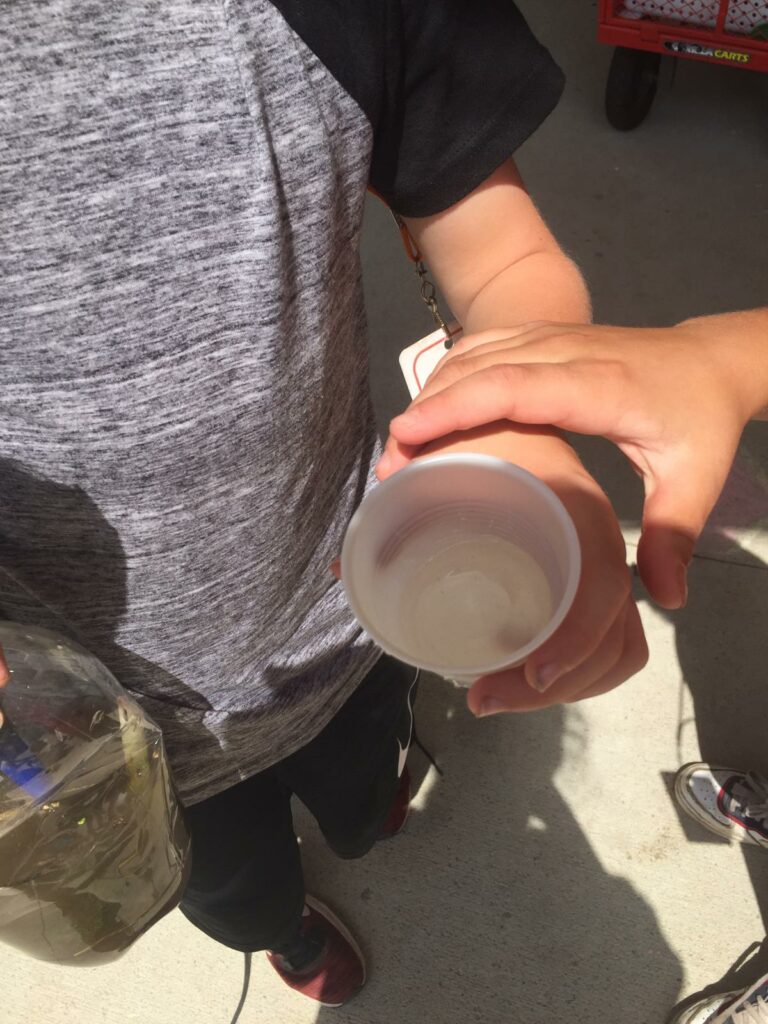



 Print
Print Email
Email
